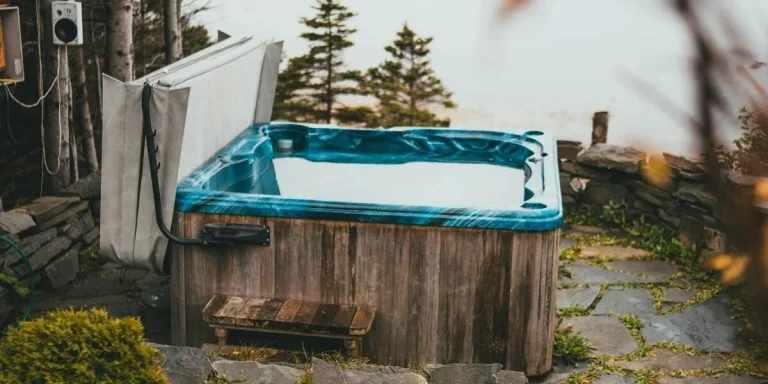Hot tubs have become an essential addition to most homes. Homeowners invest in these products due to their relaxation and wellness benefits and social appeal. However, customers looking for hot tubs have varying needs. For example, some may need a simple way to relax, while others want advanced features for hydrotherapy.
As a business owner, it’s important to understand what matters the most to your customers. This blog provides key tips for selecting the best hot tubs for different end customers. It also includes an overview of the market and the potential target customers you should consider in 2025.
Table of Contents
An overview of the hot tubs market
Types of hot tubs
Inflatable hot tubs
Wooden hot tubs
Spillover spa
In-ground hot tubs
Standard spa
Potential target market for hot tubs
Tips for selecting hot tubs for different end customers
Customer needs
Durability
Functionality
Price
Maintenance
Size
Jet configuration
Brand reputation and warranty
Smart features
Final takeaway
An overview of the hot tubs market
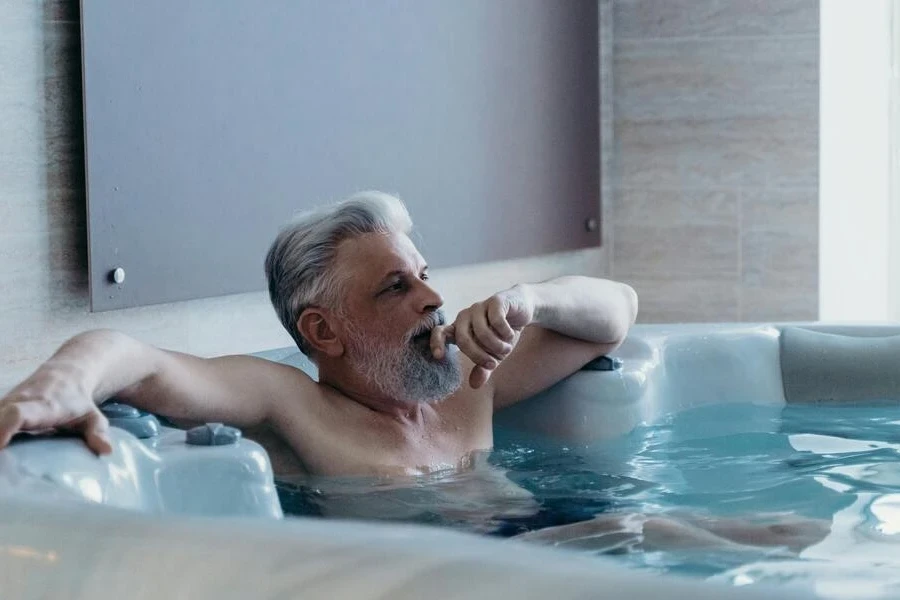
More people are buying hot tubs in recent years. These spa systems offer a way to improve the value of a property. As a result, homeowners are increasingly installing them, leading to marketing growth.
In 2025, revenues from the global hot tub will be approximately USD 5.85 billion. Market analysts expect this number to reach USD 6.90 billion by 2030, growing at a CAGR of 3.36% between 2025 and 2030.
There are various factors causing this market growth, including:
- Changing consumer preferences and lifestyles
- Growing wellness and self-care trends: these inspire customers to focus more on relaxation, relieving stress, and hydrotherapy
- Technological growth resulting in smart controls and improved water filtration
- Global economic growth and the increase in disposable incomes
Types of hot tubs
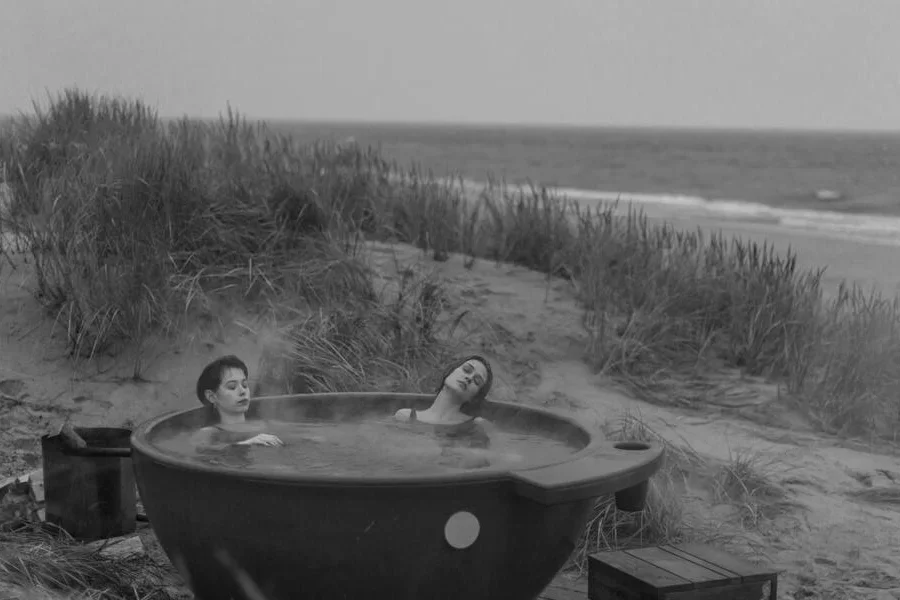
Inflatable hot tubs
Inflatable hot tubs are budget-friendly, portable, and easy-to-set-up hot tub models. Manufacturers use durable PVC or vinyl. They are ideal for temporary use and can be deflated and stored when not in use. While they offer basic relaxation, they lack advanced features like powerful jets or built-in seating.
Wooden hot tubs
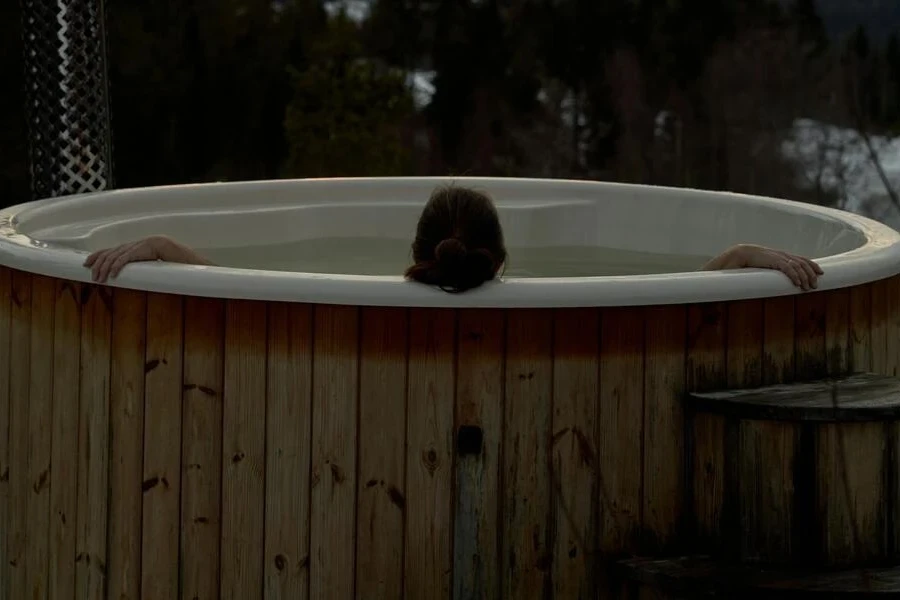
Wooden hot tubs are traditionally created from cedar, redwood, or teak. These hot tubs provide a rustic and natural aesthetic. They are ideal for customers living off-grid or those looking to minimize electricity costs since they use wood-fired heating. However, some modern versions have electric or gas heaters. Wooden tubs are popular for their durability and deep soaking experience but require more maintenance than standard models.
Spillover spa
This type of spa connects to a swimming pool, allowing water to overflow from the spa into the pool. Spillover spas offer an integrated look and are often heated separately from the pool. They are popular in high-end residential and resort settings for their aesthetic appeal and dual-purpose functionality.
In-ground hot tubs
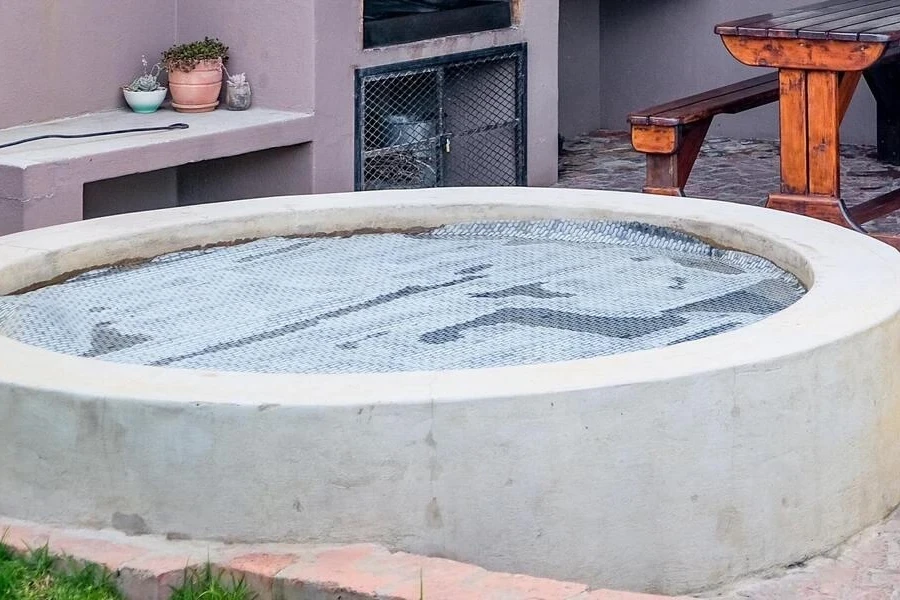
These hot tubs are permanent fixtures built into the ground like a swimming pool. They are highly customizable in terms of size, shape, and materials. In-ground hot tubs often feature high-end finishes like tile or stone.
Designers typically connect these hot tubs to pool systems. Therefore, they require professional installation, making them a premium option.
Standard spa
Standard spas are the most common types of hot tubs. They are portable spas that homeowners can place on decks or patios. A standard spa is a self-contained unit with built-in seating, powerful jets, temperature controls, and energy-efficient insulation. These tubs come in a range of sizes and features to suit different budgets.
Potential target market for hot tubs

The hot tubs market consists of two primary segments, residential and commercial. Modern-day consumers are putting significant emphasis on home wellness solutions and outdoor living spaces. This has led to increased installation of hot tubs in homes and rental apartments.
Spa and hydrotherapy in commercial settings have led to increased installation of hot tubs. Luxury hotels and wellness centers are the leading markets under this category. Others include fitness clubs, massage centers, and resorts.
Regions like North America, Asia, and Europe are the leading markets for hot tubs. Asia leads in terms of the number of spas at 48,679, with the industry valued at USD 26.5 billion. Americans in the US make 192 million spa visits every year. Europe leads in the integration of hydrotherapy equipment into wellness programs, employing about 883,352 people. As a business owner, you can position your hot tubs to target these markets.
Tips for selecting hot tubs for different end customers

Customer needs
Understanding the buyer’s primary purpose for a hot tub is crucial. Some customers prioritize relaxation, while others seek hydrotherapy for muscle recovery. Others may want an entertainment-focused model with built-in lighting and sound systems. Identifying the key customer needs helps match them with the right unit.
Durability
The construction material affects the lifespan of a hot tub. For example, some customers may opt for acrylic and roto-molded plastic hot tubs due to their durability and insulation. Others looking for temporary solutions may go for inflatable models.
Functionality
How well does the hot tub function? To answer this question, check the product specification for features and unique benefits.
Hot tubs may have varying features like water jets, temperature control, massage settings, and built-in seating. This impacts their overall experience and appeal to different customer segments. For example, customers looking for hydrotherapy benefits will need strategically placed jets. But, those focused on relaxation may prioritize ergonomic seating and quiet operation.
Price
Price is a main consideration for most customers when buying a product. For example, a UK survey found the price to be the ‘most important thing’ when buying items for more than two-thirds of consumers. Factors like size, materials, and features influence the cost of hot tubs.
As a business owner, you must understand and account for customers’ different budgets. Budget-conscious customers will opt for low-cost models, while luxury buyers may invest in high-end spas with advanced features. Offering products that cater to both markets increases reach and revenues.
Maintenance
Water care, filtration, and general upkeep vary between models. Some hot tubs require frequent chemical balancing. Others have saltwater systems or advanced filtration that reduce maintenance. Customers often consider how much time and effort they are willing to invest in upkeep before selecting the best hot tubs.
Size
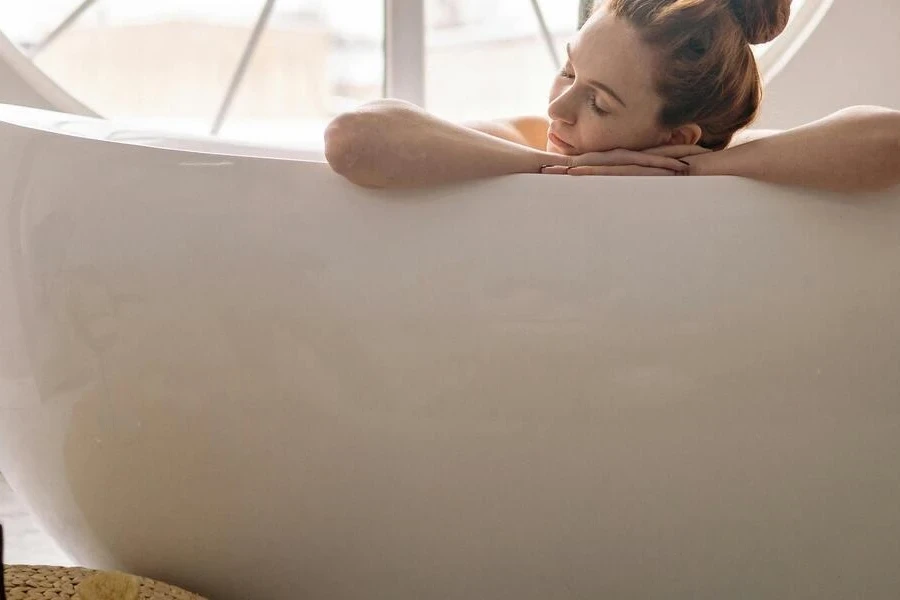
The size of a hot tub determines the number of people it can accommodate. This can vary from compact 2-person models to large 8+ person units. Customers with limited space may need a smaller footprint, while those looking for a social spa experience may prefer larger options with multiple seating arrangements.
Jet configuration
The number, placement, and intensity of jet systems influence the experience. Some hot tubs have adjustable jets for targeted hydrotherapy, while others have fewer fixed-position jets. High-powered models cater to users with therapeutic needs, while relaxation-focused customers may prefer a gentler water flow.
Brand reputation and warranty
A well-known, trusted brand often indicates quality, reliability, and good customer support. Warranty coverage is key to ensuring protection against potential defects or issues. When selecting hot tubs, avoid those with limited warranty. Most customers look for brands with strong service networks and solid warranties on shell structures, pumps, and electronics.
Smart features
Modern hot tubs come with digital controls, smartphone app connectivity, LED lighting, and integrated sound systems. These features appeal to tech-savvy buyers who want convenience and customization in their spa experience. Wi-Fi-enabled controls allow users to adjust temperature and jets remotely.
Final takeaway
The global demand for hot tubs has been steadily increasing in recent years. This growth results from changing consumer lifestyles, preferences, and dispensable incomes. To seize this opportunity, businesses must understand their customers’ needs. Knowing why your target customers need hot tubs can help stock those that match their expectations. This can increase your brand’s sales and competitiveness.
Other considerations include durability, price, smart features, jet systems, and size. These help you accommodate different customer expectations and requirements. This can result in strong customer relationships, trust, and loyalty. Therefore, businesses in the hot tub sector must employ customer-centric approaches to achieve a competitive edge.
